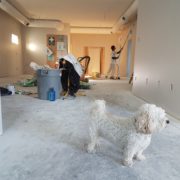Everything You Need to Know About Property Depreciation
Property investors receive many taxation advantages in Australia. And, this is the reason why they prefer to make their investment in properties all across the country. But, sometimes investors fail to file the Australian tax return and subsequently miss out on the benefits of depreciation deductions. A large number of investors are aware of the various claims available to them for expenses. The expenses may include loans’ interest, council rates, property management fees, repairs and maintenance costs, among others.
Given below are some vital details about property depreciation that you should be aware of:
1. Property depreciation:
When the building begins to age, its shape and the assets inside it tend to wear out. These things depreciate over a period of time. It is worth noting that the Australian Taxation Office or ATO has permitted income-generating properties’ owners to claim depreciation as a tax deduction. Depreciation deduction can be divided into two separate categories. It includes division 43 capital works allowance and division 40 plant and equipment depreciation. It will help in preparing a property depreciation schedule.
2. Significance of capital works allowance:
It pertains to the claims for the wear and tear that takes place to the building structure and fixed objects. Capital work will contain objects such as roofs, walls, doors, kitchen cupboards, and toilet bowls, among others. Any residential building where construction started after September 15, 1987, will make its owner eligible for capital works deductions. The deduction can be sought for up to forty years at the rate of 2.5% every year. Owners of buildings built before 1987 should discover what deductions will remain available as these buildings underwent renovations. The renovations will lead to capital works deductions. Rental home returns have emerged to be highly profitable.
3. Plant and equipment depreciation:
Plant and equipment depreciation are eligible to be claimed for conveniently removable fixtures and fittings available inside the property. There are over 6000 various depreciable assets identified by ATO. It includes carpets, blinds, air conditioners, and smoke alarms among others. Each plant and equipment asset is allocated an individual effective lifespan and depreciation rate. As per the existing legislation, second-hand property owners who exchanged contracts after May 9, 2017, cannot claim deductions for earlier used plant and equipment assets. And, investors who bought new residential and highly renovated properties, commercial real estate will be able to claim depreciation deductions.
4. Importance of claiming depreciation:
It is significant for the owner of the residential property to claim a depreciation deduction. It will help in making a huge difference in an investors’ cash flow. We have discovered that a residential client’s average first-year claim was approximately $9000.
Conclusion:
You may claim the depreciation of your investment property against taxable income. And, seasoned property investors are aware of the benefits of depreciation residential rental property. Some property investors will even take depreciation into consideration prior to buying their next investment property. Anyone buying a property for the purpose of generating income will remain eligible to depreciate buildings and assets inside it against assessable income. It will help to lessen their tax burden and maximize the gains.












